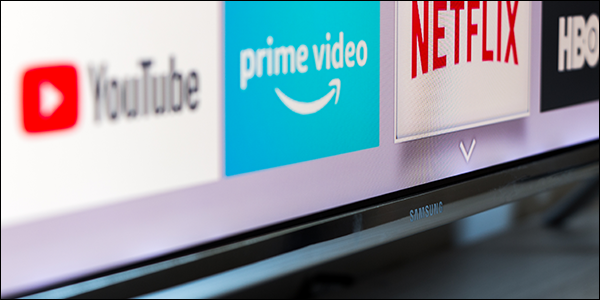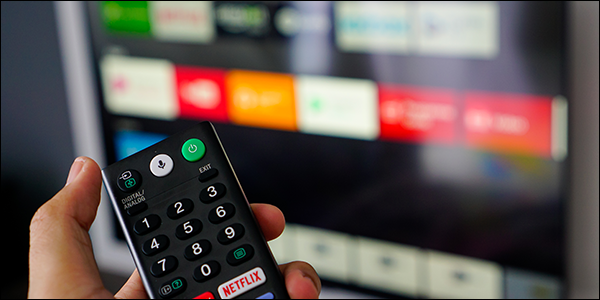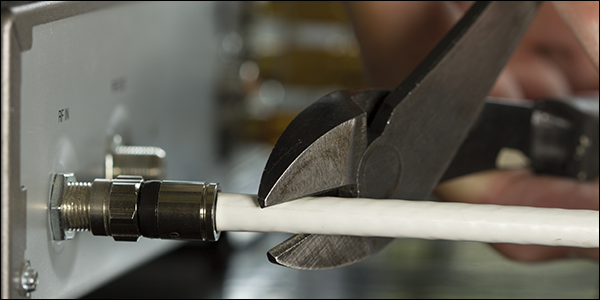Quick Links
We've often thought of streaming services as our salvation from cable, but the world of streaming is starting to adopt some distinct cable television characteristics. How far will it go?
Why Streaming Services Are Awesome
Streaming services have been successful because they do things differently. They're known for being cheap, convenient, ad-free, and contract-free. They've also changed the way that we consume media, and they've offered us a reliable alternative to cable companies.
Early streaming services, like Netflix, Hulu, and Amazon, entered the streaming market with aggressive strategies that benefited consumers. They signed as many deals as they could with TV networks, and built massive libraries of hit movies and TV shows. There's a good chance that you signed up for Netflix years ago specifically for Breaking Bad, The Walking Dead, or the library of Disney movies that they offered.
Streaming services also gave us a new way to watch serialized TV shows. Instead of rushing home to catch a new episode of Bones every week, you could wait for it to come out on a streaming service and binge-watch it over a weekend, ad-free. Plus, a lot of these streaming services implemented learning algorithms that encouraged you to watch shows you might have missed. Netflix's algorithms are particularly detailed, to the point that the website will show different thumbnail artwork to different users based on their preferences and the shows they've watched before.
But it turns out that the greatest strength can also be a weakness. Cord cutting only sucks if you're trying to replicate cable---unfortunately, streaming services themselves are now trying to copy cable.
The Streaming Services We Love Aren't Sustainable
Years ago, it seemed like everything was on Netflix. The service didn't have to compete with many streaming competitors, so it managed to sign some killer deals with networks like Starz, Disney, and AMC. These deals brought in thousands of shows and movies that people were familiar with and ready to watch, like Breaking Bad, The Walking Dead, NCIS, CSI, and Hannah Montana. These popular, contemporary shows brought a lot of subscribers to Netflix. And it wasn't hard to keep people subscribed to Netflix, because it had such a massive library of shows and movies.
But that started to change very quickly. Competitors like Hulu and Amazon Prime began to outbid Netflix for big-name shows and movies. Services like HBO GO and Showtime cut out the middleman by building their own streaming services. And some of the networks that signed deals with Netflix early on felt that they were ripped off and tried to find better deals once their contract with Netflix ran out.
Let's put things into perspective. In 2008 Netflix signed a 20 million dollar contract with Starz and gained 2,500 shows and movies from the deal, including hit titles like Ratatouille and Spiderman 3. But just last month, Netflix had to cough up $100 million for a single TV show, Friends. They can't afford to bring in as many hits shows and movies as they used to, which gives subscribers less of a reason to stick around.
The binge-watching format is also unsustainable. If you sign up for Netflix to watch Stranger Things, you'll probably finish watching it in a week or two. If Netflix doesn't have any shows that make you want to stick around, then you can cancel the service when you're done with Stranger Things. And if you managed to do all of this in your "first free month," then Netflix doesn't get a penny.
Hit shows bring people into streaming services, but they don't necessarily keep people around. In the past, a hit show that airs week-by-week on a TV channel gave people a reason to renew their subscription every year and would provide networks with a steady stream of revenue. But streaming services can't expect that from their shows.
Streaming Services Are Becoming TV Channels
Netflix and the other streaming services can't afford to compete for big-name shows anymore, and they certainly can't afford to bring in contemporary, popular titles like they used to. A show like Friends will keep die-hard Friends fans subscribed, but Netflix can't cash in on the hype of another Breaking Bad or Walking Dead.
That is unless they create the hype themselves. In the past few years, Netflix has slowly weaned themselves from network TV shows in favor of Netflix Originals. Shows like Stranger Things, Tidying Up with Marie Kondo, and House of Cards have gained Netflix a lot of subscribers, and they don't cost nearly as much as a Friends renewal. It's gotten to the point where the only really good shows on Netflix are Netflix Originals. This same process is slowly happening to services like Amazon Prime and Hulu, and companies like Apple are planning to create their own original content streaming platforms in the future.
This is a great thing for streaming companies because it ensures that their competition won't steal all of their prime content. But this format sounds very familiar to the format of cable TV shows. Each channel has exclusive content, with the occasional crossover. And if those network TV shows are trickling away from the traditional streaming services, then where are they going?
Well, TV networks are building their own streaming services. Some of them, like Starz or Adult Swim, are only available through an add-on to your cable service provider. But others are following in the path of HBO GO and offering their shows and movies as exclusives for around $15 a month. Disney, WarnerMedia, DC, and NBC plan to build their own streaming services in 2019, and in a lot of cases, you won't find their properties on other platforms.
There's nothing wrong with original content, but the early strength of services like Netflix and Hulu was their diverse, affordable library that was populated by a number of network TV shows. If this trend toward exclusive content continues (and it will), then you're going to have to subscribe to a lot of different services to watch shows from different networks. In essence, it's going to feel like streaming services are a new iteration of TV channels.
Streaming Services Are Mimicking Cable Bundles, Too
Since the dawn of time, cable bundles have been the bane of human existence. People hate that they have to spend exorbitant fees for a package of channels when all they want is access to a single television show or a single channel. And when the two or three shows that you want to watch are included in separate bundles, you end up spending a ridiculous amount of money, mostly on content that you don't want.
Why are cable bundles full of shows that nobody wants? Because that's the point. Cable companies bundle popular channels with unpopular channels to keep everything afloat. Nobody in their right mind would want to pay for the Home Shopping Network, but it can turn a profit, so it ends up in a bundle with NFL or Cartoon Network.
The bundle format is what keeps cable alive. It isn't good for consumers, but it guarantees that TV channels receive a stable stream of income, even if they're pushing garbage content.
Streaming services work in a similar, yet quieter fashion. Netflix, Hulu, and Amazon are willing to shell of hundreds of millions of dollars on shows like The Office, Seinfeld, and Friends because these are shows that die-hard fans will watch over and over again for years.
If every fan of The Office or Friends keeps a Netflix subscription, then Netflix is guaranteed a stable stream of income that can support their other titles, similar to the way that cable bundles mix popular and unpopular channels to keep everything afloat.
Yes, big hits like Stranger Things bring in a lot of subscribers. But these hits are few and far between, and binge-watchers can unsubscribe whenever they're done with a trending show. Since Netflix hasn't managed to make their own cult-classic comedy show that can keep people around the way that Friends does, the company has no choice but to shell out a $100 million for a contract renewal. Upcoming streaming services, like NBC, are also relying on the quiet-bundle format to keep the roof over their head. You'll probably only subscribe to an NBC streaming service for one or two shows, but if those shows are The Office or Parks and Rec, then there's a chance that you'll hold onto that subscription for a long time.
While the bundle format helps streaming services stay alive, it can become frustrating and expensive for consumers. Netflix has been raising their subscription rate every year, presumably because they're spending so much money on their hundred-million-dollar contracts. Some services like Hulu with Live TV and Amazon Prime are following suit, and there's no telling how high the prices will get. And since more streaming services are starting to crop up, good content is going to start becoming even more exclusive. You could eventually find yourself subscribed to a handful of streaming services, just because each one of them has a single show that you want to watch.
Streaming Live TV Is Essentially Just Cable
One of the main reasons why people stick to cable is because of news and sports channels. There are a lot of online services for live TV and sports, and they tend to be a lot more expensive than the average streaming service. The basic Hulu Live and Fubo packages are $45, but you have to pay a bit extra if you want access to more channels. Sling starts at $25, but it also has add-on packages.
Add-ons? Pay extra for more channels? That sounds familiar. And why wouldn't it, because Live TV streaming services are owned and operated by cable companies. Sling is owned by Dish Network, Disney will be the majority shareholder of Hulu in a few months, and I bet you can't guess who owns DirecTV Now.
Some live streaming services aren't just cable clones. Twitch is one of them. But the televised news and sports industries are entirely committed to the format of cable. They've grown up alongside cable TV. If news or sports started being shown on a service like Twitch, then they would have to restructure their format completely. They'd have to do advertising differently, they'd have to keep their audience from switching tabs, and they'd have to account for a global, timezone-less viewership. And if people are subscribing to an online version of cable, then news and sports networks have no reason to evolve their format.
With these live TV services, consumers are already losers. People are quitting their cable company just to subscribe to an online version of their cable company. They're being charged less right now, but live TV streaming services are already becoming more expensive.
Not to mention, if on-demand streaming services continue to fragment into expensive little websites, then it may be cheaper to subscribe to a live TV streaming service that shows content from a variety of networks.
Why Is This Happening?
Streaming services are beginning to look like cable companies, that fact is undeniable. They're adopting practices that are similar to bundles, and they're fragmenting into channel-esque services that offer their exclusive content for $15 a month. Some streaming services are operated by or being purchased by the same corporations that run the cable companies, and most online live TV services are just a wolf in sheep's clothes.
This isn't happening because streaming services are competing with cable TV. Streaming is the future. This is happening because streaming services and television networks are competing with one another inside of a decentralized, unsustainable business model. They have to bid for shows that could eventually be pulled from their service by a competitor. They need to offer a lot of good content to be successful. They don't have contracts or week-by-week shows, so subscribers can leave at any time.
This competition is pushing streaming services to focus on exclusive content, and turning on-demand streaming into a new iteration of television channels. And since on-demand streaming services haven't found a way to accommodate for live news and sports, cable companies are diving headfirst into the live TV streaming market. They're preventing the live TV format from evolving the way that serialized TV has evolved, and they're laughing their way to the bank because their customers think that they've finally escaped cable.
Streaming Services Are Still Awesome
There are a lot of benefits to streaming services, and those benefits won't go away anytime soon. As of right now, you can save a lot of time and money by cutting the cable. Even the Live TV options are cheaper than cable (right now). Plus, you can split the cost of your subscriptions with friends or family, and you can unsubscribe from services whenever you feel like it. As Justin Pot pointed out, streaming services are just better than cable---and they still are.
People that don't watch a lot of movies can make the occasional rental on Amazon or Youtube, and some websites offer advertisement supported on-demand streaming (AVOD), like Lifetime, the Roku Channel, Youtube, Plex, and eventually IMBD Freedive. Streaming services also give people a way to watch old shows or movies that have been pulled from syndication. Niche services like Mubi and the Criterion Channel let you watch expensive, hard to find films, and services like Qwest.tv are dedicated to concerts and music videos.
And of course, streaming services have completely changed the way that we create and consume media. Finding a movie or a TV show is easier than ever, and serialized TV shows are transforming into binge-watching masterpieces. Netflix, Amazon, and Hulu originals have made a big impact on our lives and our culture, and the quality of these original shows and movies is sure to increase as competition grows.
But we should be wary of streaming services. They've offered us salvation from cable, but a few missteps could take us back to square one. It's easy to ignore a $2 increase on your bill, and it's easy to stay subscribed to a service that you don't use. If you don't like where a streaming service is going, take your money elsewhere. That's the only way to communicate with a business.
Sources: Medium/Netflix, Digitaltrends, Forbes, The New York Times, Macworld




